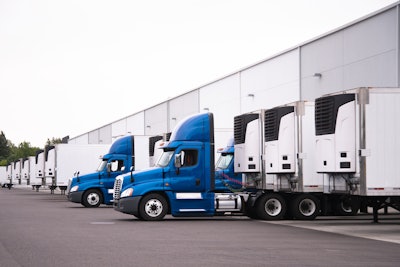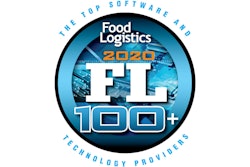
Since the introduction of the U.S. Food and Drug Administration (FDA) Food Safety Modernization Act (FSMA) in January 2011, the transportation industry has been exposed to an endless array of technology solutions to help monitor and manage the perishable food and beverage supply chain. As the FDA moved from a focus of treating foodborne illness to preventing it, every step in the supply chain was tasked with maintaining consistent temperature and freshness from the grower or manufacturer to the end consumer.
In response to the FSMA, transportation companies have now fully adopted electronic logging device (ELD) mandates to monitor many facets of driver, truck and trailer condition and location. GPS has been the go-to standard for tracking large items like trucks and trailers for the past several decades, but with the proliferation of the Internet of Things (IoT), the mindset of what can be tracked is rapidly changing.
The age of IoT
Monitoring shipments becomes more complex in a multi-tiered distribution scenario. It is further complicated when a product lot is broken down into smaller shipments, even down to the pallet or carton level, then shipped on a variety of transport modes moving inside warehouses and outside to rail, trucks or barges before reaching the end consumer. Tracking and monitoring these product lots as they move through the cold chain proves challenging when each transport mode may have a different technology platform that relays intelligence from the field. Each platform can provide invaluable amounts of data, but tying these communications platforms together in a cohesive manner that yields actionable data can prove to be time-consuming and cost-prohibitive. The proliferation of IoT helps drive simpler and lower cost tracking solutions that can be used across these multi-tiered distribution channels to track increasingly smaller product shipments.
The transportation industry and associated enterprises can leverage mobile IoT networks to connect their millions of devices, plus add a variety of new sensors that provide intelligence not previously captured during cold chain shipments. Some of these new sensors include not only temperature, but also humidity, light sensitivity, velocity, CO2, glass break and more. However, the backbone of sensor data is location. Real-time location data provides contextual intelligence that enables immediate action to rectify a situation before it results in loss of product or productivity, as well as more control to make informed decisions based on exactly where products are in the distribution cycle.
The ITU states that 97% of the world’s population lives within reach of a mobile cellular signal. Mobile networks are ideal for providing connectivity for IoT devices as these network signals reach inside buildings as well as provide outdoor coverage. Mobile IoT is less costly, especially for asset tracking where low bandwidth is sufficient for a majority of use cases.
A spirits manufacturer overcomes challenges
Imagine a spirits manufacturer is faced with several challenges in tracking millions of cold chain containers of product as the containers travel from the manufacturing floor to the retail store. The manufacturer wants to ensure consistent temperature throughout the entire cold chain, as well as track an individual product lot to ensure freshness, reduce waste and help eliminate loss. With stringent FDA quality controls, the manufacturer could face millions of dollars in fines if not able to locate a specific lot in the event of a recall.
A typical product lot encounters up to half a dozen different modes of transport, and many times can be broken down into numerous smaller batches that are then shipped to different distribution locations before reaching the final destination. Simply tracking the truck or the trailer is not adequate in this multi-tiered distribution scenario. The spirits manufacturer desires a more granular approach to tracking assets and capturing critical intelligence as products move through the distribution chain.
Using older location technologies like GPS, Wi-Fi or Bluetooth is not feasible for tracking individual cases of product, as these cases change modes of transport and are broadly dispersed indoors and outdoors. The manufacturer just needs a simple, secure asset tracking solution that can provide seamless indoor and outdoor coverage at a low cost. The company can turn to specific mobile IoT technologies to tap into existing cellular networks.
A mobile IoT asset tracker with years of battery life can be placed onto pallets and into cases of product, allowing for seamless tracking using ubiquitous 4G and 5G cellular networks. Assets can be managed throughout their journey regardless of the product being inside the back of a truck, out on the open road, inside a warehouse or in a retail store. The spirits manufacturer can now gain end-to-end supply chain visibility, leading to superior quality control for the product and continuous supply of stock for retailers.
How mobile IoT delivers
With new mobile IoT technologies driving the cost of asset tracking down, companies can now track lower-value assets and gain actionable insights that have a real impact on the bottom line. While every company has unique needs and a different use case for asset tracking, be it end-to-end supply chain visibility or loss prevention, one thing they all have in common is the need for simple, low-cost location intelligence that delivers strong ROI. Mobile IoT helps to deliver that.




















